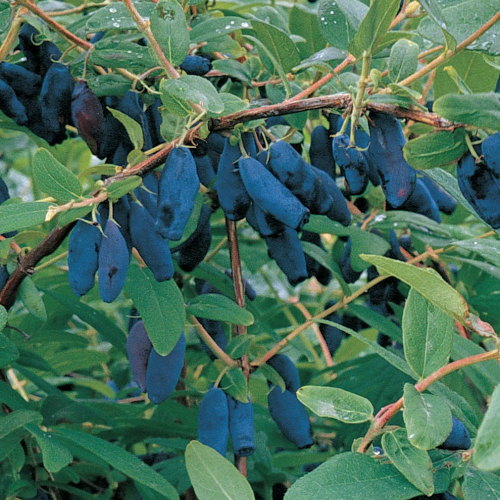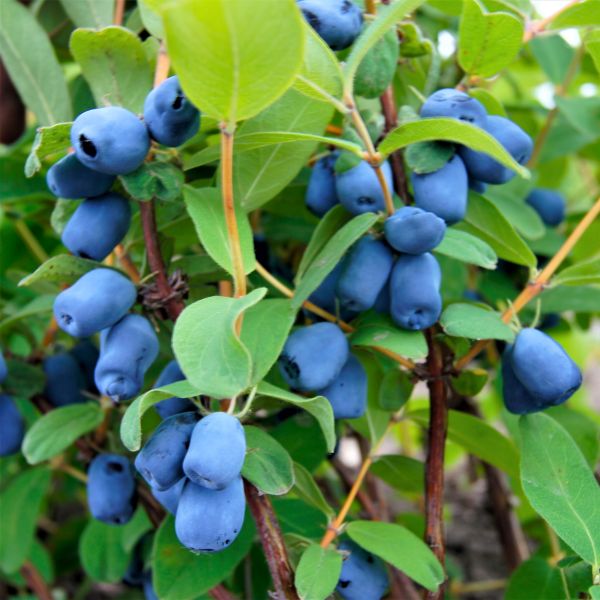How to grow honeyberry plants for nutritious fruits and cold-hardy shrubs – they'll survive down to hardiness zone 2
Honeyberry plants are an ideal crop for northern gardeners
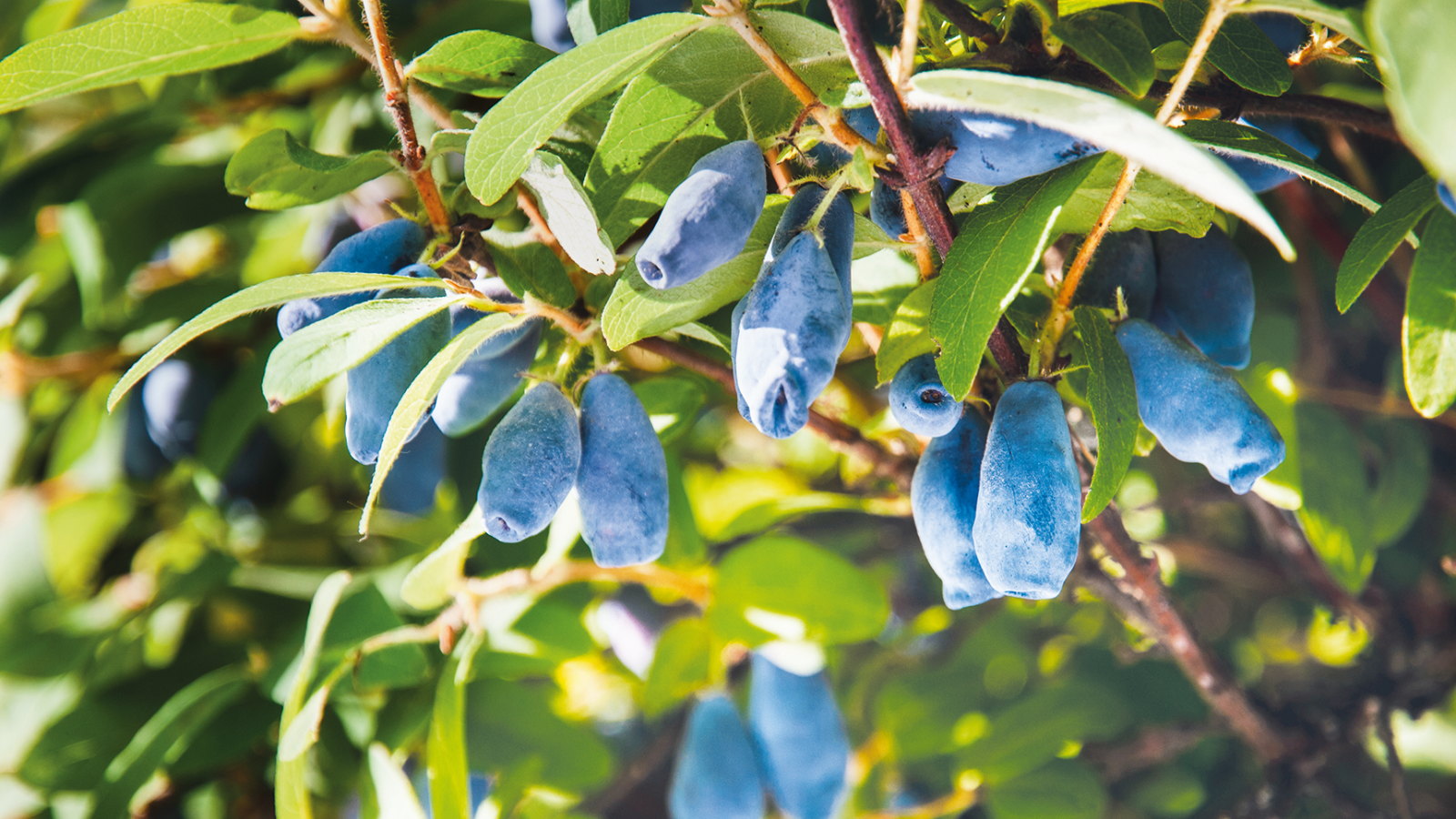

Honeyberries may not be the most renowned fruits, but they are becoming more popular, and shrubs make a fantastic choice for gardeners in cooler climates who want to grow highly nutritious fruit. Honeyberry plants (Lonicera caerulea) are actually members of the honeysuckle family and very cold-hardy indeed.
Honeyberry plants are highly versatile and provide early harvests of small, elongated fruits in late spring and early summer. These fruits bear the same color as blueberries but taste more like a cross between said blueberries and raspberries. The fruits are high in vitamins and antioxidants, offering a fantastic harvest early in the season, ideal for eating raw or adding to jams, jellies, or for baking.
If you live in a cooler climate and are looking for a new, unique fruit suited to your location, then honeyberries are worth considering as an alternative to growing blueberries. This guide looks at how to grow honeyberry plants, complete with planting and care tips from a fruit expert.
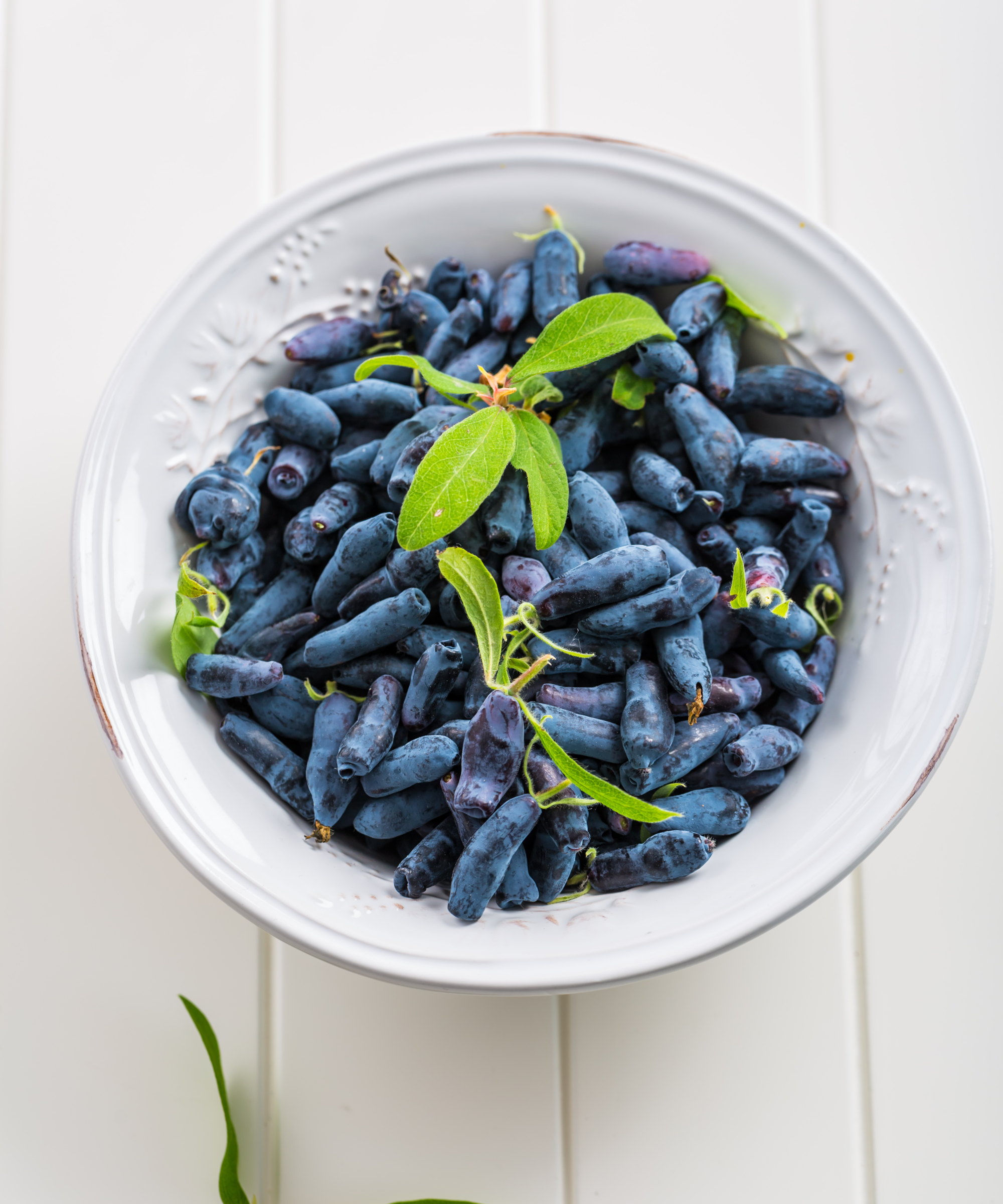
What are honeyberries?
Honeyberries may sound new, but the crop has been grown for centuries by growers in Eastern Europe, northern Japan, and northern China.
Today, they are commonly grown in colder northern climates, as the fruits are suited to cooler conditions. They are ideal for growing in US hardiness zones 2 to 7. Honeyberry plants are very cold-tolerant, down to -55°F, and the flowers can cope with frosts.
‘Honeyberries are a leading favorite among gardeners up north,’ admits Katie Brines from Stark Bro’s Nurseries and Orchards. ‘The berries themselves have a blueberry-like flavour, sweet and tart, with deep blue skin, and are prized for their rich nutrients, including antioxidants.’
Honeyberries are also known by several other common names, including blue honeysuckle, sweetberry honeysuckle, and haskap berry, which comes from the name given to plants by the native Ainu people of Hokkaido, Japan.
Design expertise in your inbox – from inspiring decorating ideas and beautiful celebrity homes to practical gardening advice and shopping round-ups.

Katie Brines is a gardener and grower, as well as being part of the small marketing team at Stark Bro's. The nursery has provided quality fruit trees, nut trees, berry plants, and garden plants across America for over 200 years.
Where to grow honeyberry plants
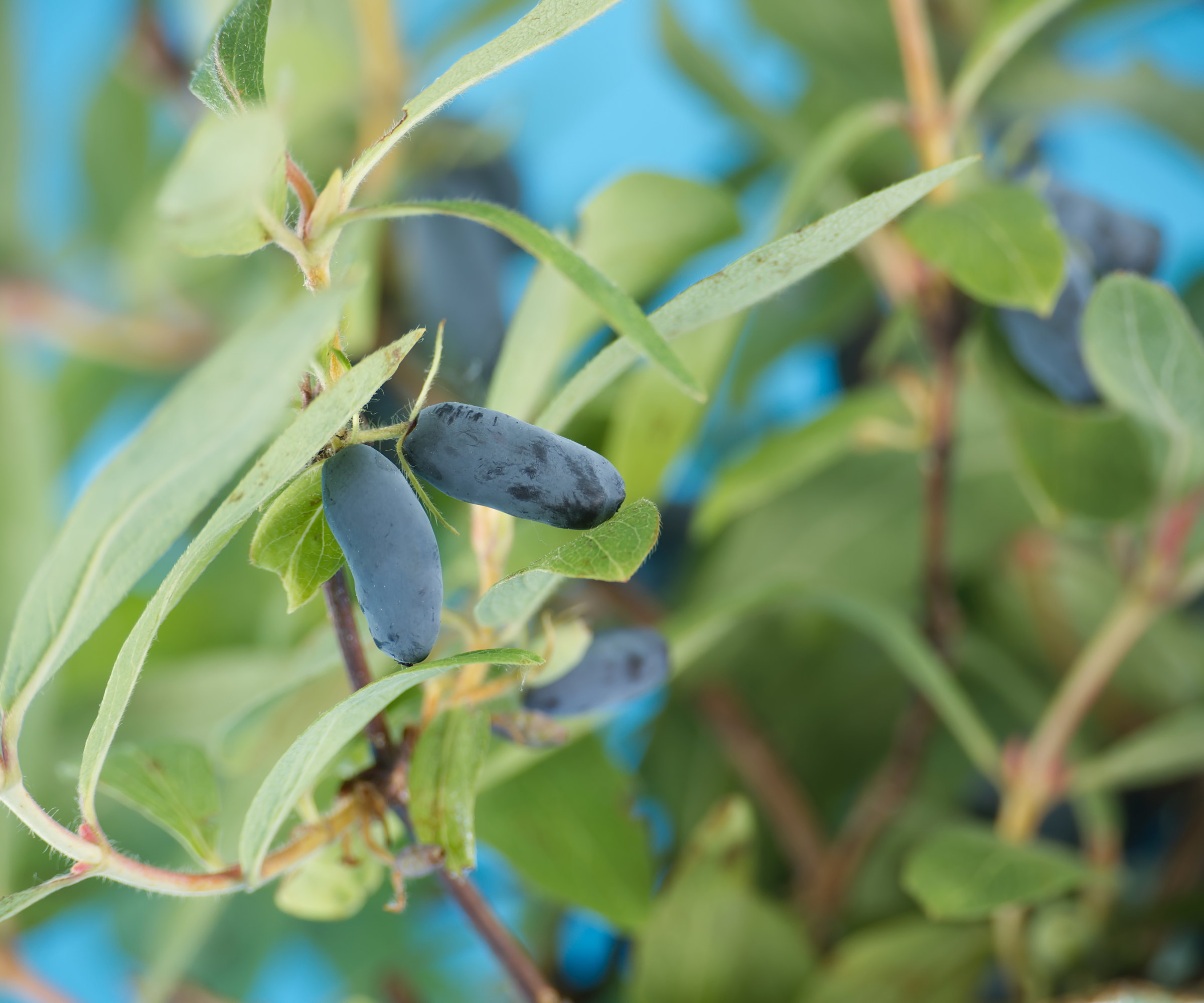
Honeyberry plants can be grown in the ground, raised beds, or container gardens. Plant the fruit bushes in fall or spring, provided the ground is workable, at the same depth they were in the pot.
Katie Brines claims honeyberry plants enjoy similar conditions to blueberries, such as a planting spot with well-drained, slightly acidic soil. She adds: ‘Honeyberries grow best with full sun but can tolerate partial shade, making them versatile for many gardens.’
A spot with 6-8 hours of sunlight a day is ideal, as good light levels will boost fruit production; however, honeyberries suffer from too much sun in warmer months when grown in warmer climates. A planting spot with morning sun and afternoon shade can protect them from leaf scorch in regions at the top end of their suitability.
Plant more than one honeyberry plant to ensure you get fruit. ‘Honeyberry plants do need a pollinator, another variety that blooms around the same time,’ says Katie. ‘A family of four should consider planting 2-3 types of about 6-9 plants for snacking and baking.’
Space plants four to six feet apart and water them deeply after planting to help the bushes get established in their new home. Mulching around plants will help retain moisture in the soil and smother weeds.
How to grow honeyberry plants - maintenance tips

Water deeply for the first season as the honeyberry plants get established. For the following years, pay close attention and water plants when the soil feels dry. Honeyberries are shallow-rooting plants that want 1-2 inches of water per week, especially during warmer temperatures.
Check with your fingers or a soil moisture meter (like this soil moisture meter at Walmart) and water when the top few inches of soil are dry, but avoid overwatering plants, as honeyberry plants struggle if they sit in wet soil for long periods.
Honeyberries aren’t hungry feeders, but will benefit from some supplemental feeding annually for the nutrients they need to produce a good crop.
The best time to fertilize the fruit comes in early spring, and Katie Brines recommends: ‘Honeyberry plants like a well-balanced fertilizer, so a mild 5-5-5 or 10-10-10 should be used.’
As honeyberries develop and ripen fruit early in the season, it would be a fertilizing mistake to give plants any additional feeding after the end of June.
Start annually pruning honeyberry plants once they are four years old to keep them healthy and super-productive. Honeyberries fruit on older wood and can either be pruned during dormancy or after harvesting.
Prune with a pair of clean and sharp pruning shears and start by removing any dead, damaged, or diseased branches. Remove some of the oldest shoots and thin the center of the bush. This will encourage the development of newer, more productive stems and improve air circulation to keep the plant healthy.
Avoid the mistake of overpruning or excessively pruning honeyberries, as this will remove lots of fruiting wood and affect your yield of berries.
Kate Brines describes honeyberries as ‘an early season treat’, adding: ‘These berries ripen in late spring and early summer.’ To ensure you get the best harvest possible, netting bushes may be necessary as birds are typically attracted to the fruits as they ripen.
Honeyberries turn blue as they ripen in late May and early June. Take care to harvest berries individually from the plant or use a berry picker (like this berry picker at Amazon) to scoop ripe fruits from the bush.
Honeyberries are best enjoyed quickly after harvesting. They have a shorter shelf life than when you harvest blueberries, lasting up to a week in a refrigerator. Alternatively, honeyberries can be frozen to store for up to a year.
FAQs
Can you grow honeyberries in pots?
Honeyberries are a fruit you can grow in pots. Growing honeyberries in containers will see plants stay more compact, though they will need to be regularly moved into larger pots every few years as plants outgrow their current ones.
Start with a three-gallon container filled with a quality free-draining potting soil. Plants in containers require more regular watering than those in the ground. They should be given some extra compost at the start of each growing season and fed in spring with a slow-release balanced fertilizer.
Are honeyberries invasive?
Honeyberries are not classed as invasive plants. They are members of the honeysuckle family, of which many are classified as invasive, but Lonicera caerulea is not regarded as one of the troublesome plants.
When you know how to grow honeyberry plants and enjoy the rewards they bring, you might want to increase your numbers. There are two ways to do this: you can grow honeyberry plants from seed or take plant cuttings.
Collect seeds in late spring or early summer and sow them directly into pots filled with seed compost. Keep them moist and warm to germinate, then store plants in an unheated greenhouse or cold frame over winter to plant out after the frosts next spring.
When it comes to cuttings, you can take hardwood cuttings of mature stems in late fall or semi-ripe cuttings of young, non-fruiting stems in the summer.

Drew has worked as a writer since 2008 and was also a professional gardener for many years. As a trained horticulturist, he worked in prestigious historic gardens, including Hanbury Hall and the world-famous Hidcote Manor Garden. He also spent time as a specialist kitchen gardener at Soho Farmhouse and Netherby Hall, where he grew vegetables, fruit, herbs, and cut flowers for restaurants. Drew has written for numerous print and online publications and is an allotment holder and garden blogger. He is shortlisted for the Digital Gardening Writer of the Year at the 2025 Garden Media Guild Awards.
